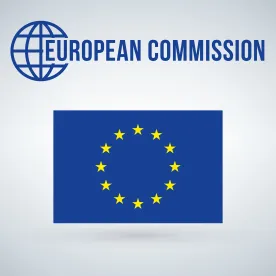Both the European Union (EU) and national governments have sought to respond rapidly to the economic impact of the COVID-19 outbreak. The European Commission (EC) is responding to the increasing need for companies to receive urgent financial support by adopting new State aid tools and emphasizing its ability to approve aid quickly.
In recent days, the EC has adopted a State aid Temporary Framework (Framework) and issued a template for the notification of measures that will compensate companies that have suffered damages (Template). The Commission has also set up a dedicated mailbox and phone line for Member States, which is open seven days a week.
The Commission’s reaction to the pandemic is markedly (and intentionally) faster than its response to the 2008-09 financial crisis, when the adoption of a similar Temporary Framework took three weeks.
State aid Temporary Framework
Article 107(3)(b) of the Treaty on the Functioning of the European Union (TFEU) permits Member States to grant aid to remedy a serious disturbance in the economy. Last week, the President of the EC indicated that the ongoing effects of the COVID-19 outbreak would qualify as such a disturbance. On 19 March 2020, the EC has adopted a Temporary Framework that specifies certain types of aid that Member States may grant to companies that entered into difficulty due to the outbreak.
Under the Framework, national governments may grant five types of emergency aid without prior notification to the EC, i.e.:
-
Direct grants, selective tax advantages and advance payments worth up to EUR 800,000 to a single company to address urgent liquidity needs;
-
State guarantees of bank loans granted at reduced premiums, to support either investment or working capital needs;
-
Subsidized interest rates on public or private loans, at least equal to the base rate applicable on 1 January 2020 plus the credit risk premium corresponding to the risk profile of the recipient (with different rates for SMEs and non-SMEs).
-
Safeguards for banks that channel State aid to the real economy, i.e. the Framework confirms that such aid will be considered direct aid to the banks’ customers, not aid to the banks themselves, and gives guidance on how to ensure minimal distortion of competition between banks. Should direct aid to banks become necessary to compensate for their own damage caused by the COVID-19 outbreak, such aid would not be considered as extraordinary public support under State aid rules;
-
Short-term export credit insurance will be provided where needed thanks to an additional flexibility on how to demonstrate that certain countries are not-marketable risks.
The framework also includes a number of safeguards, including linking subsidized loans or guarantees to businesses to the scale of their economic activity, by reference to their wage bill, turnover, or liquidity needs, and to the use of the public support for working or investment capital.
Template for notification under Article 107(2)(b) TFEU
Article 107(2)(b) TFEU allows Member States to grant “aid to make good the damage caused by natural disasters or exceptional occurrences”. As we reported previously, the EC has confirmed that the COVID-19 outbreak qualifies as an “exceptional occurrence”. Aid granted under Article 107(2)(b) requires the EC’s prior approval before it is granted.
On 17 March 2020, the EC published a Template for Member States to use to notify aid schemes that they intend to implement in response to COVID-19. This is intended to streamline the notification process and allow for quick assessment, and follows the EC’s approval of the first such measure (notified by Denmark) within 24 hours.
The key features of the template are:
-
Member States are requested to provide a general description of the aid scheme, including the sector concerned, the duration and the intensity (under Article 107(2)(b) TFEU, aid may cover up to 100% of eligible costs).
-
They should also give a description of the damage covered, highlighting the causal links between the COVID-19 outbreak and the damage suffered and the aid requested. The description should be accompanied by documentation certified by independent experts. The EC suggests using a reference point to quantify damages, such as a prior season in which normal business conditions prevailed.
-
Member States are required to describe precisely the aid measure, specifying the mechanism used to ensure that the aid does not exceed the damage suffered and remains within the scope of the COVID-19 outbreak.
-
All bodies granting aid will have to commit that they will recover any payment that exceeds the damage suffered as a direct consequence of the COVID-19 outbreak and that they will submit a report no later than one year after the date of the Commission approval decision specifying the amount of compensation and recoverable advances granted.
The EC’s latest notice is in particular a response to the need for aid to airlines and airports across the EU. An annex on the transport sector (airlines, airports, rail, bus and maritime companies) states that the assessment of support to the sector will be made on a case-by-case basis.
Companies in need of financial relief should seek advice, either individually or through their trade associations, on how to work with Member States and the EC to ensure that any possible measures can be put in place in a timely manner, in line with EU State aid rules.
Henri De Ligne contributed to this article.






 />i
/>i

